Abstract
Anaemia associated with malaria is a major public health problem in African countries. Since most primary health facilities have to rely on physical signs and not laboratory tests to detect anaemic patients who need referral for blood transfusion, we have assessed the reliability of simple clinical signs to predict severe anaemia. A trained field assistant examined 368 children admitted to a tertiary care hospital, assessing the pallor of their eyelids (conjunctiva), palms and nailbeds, counting the respiratory rate, and looking for signs of respiratory distress. After the children's admission, their packed cell volume (PCV) was measured, and the need for transfusion and the outcomes were noted. A second observer examined 173 of these children so that interobserver variability in the detection of clinical signs could be assessed. A total of 27% of the 368 children had a PCV of < 15%. In a multiple regression analysis, definite pallor of the conjunctiva, definite pallor of the palms, and a "sick" appearance of the child were identified as independent significant predictors of a PCV of < 15%. The best predictor was a combination of definite pallor of the conjunctiva and pallor of the palms, with a sensitivity of 80% and a specificity of 85%. Inclusion of signs of respiratory distress did not improve the prediction. Pallor was a reproducible sign (weighted kappa statistic for the comparison between two observers: kappa = 0.6 for conjunctival pallor). We conclude that pallor can be used as a sign for referring children who may require blood transfusion.
Full text
PDF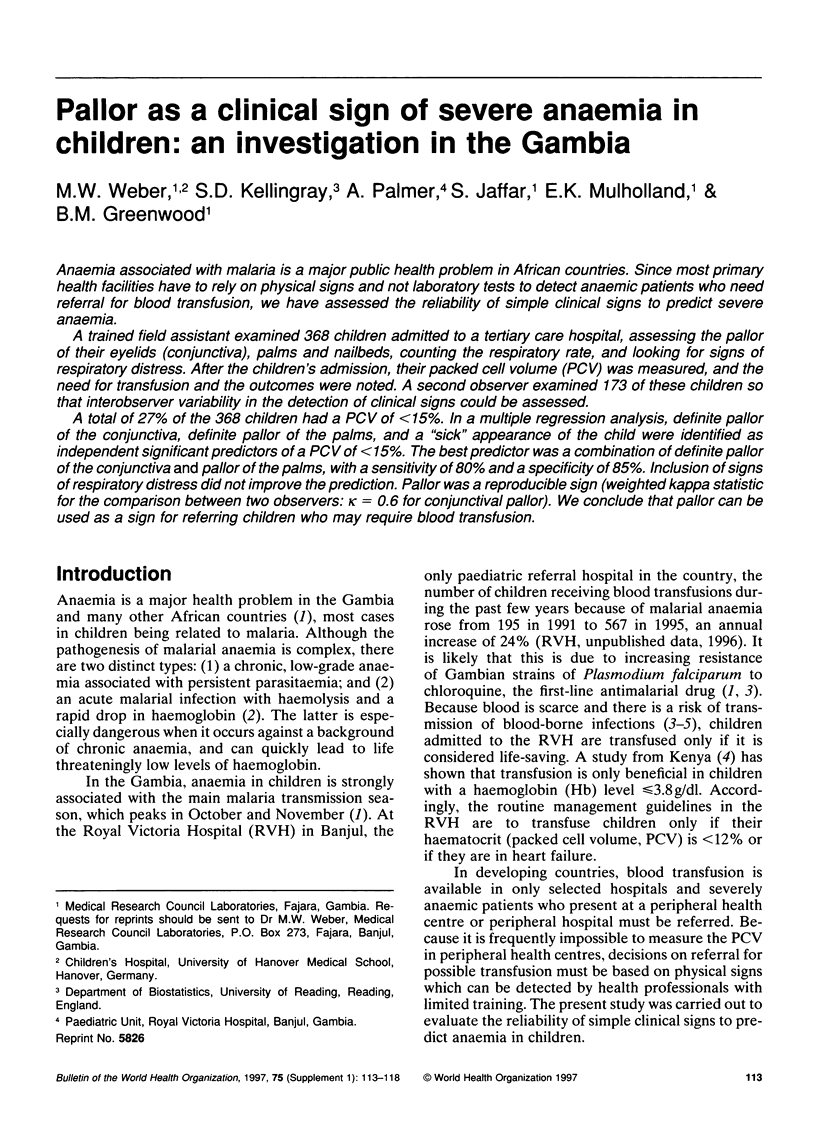
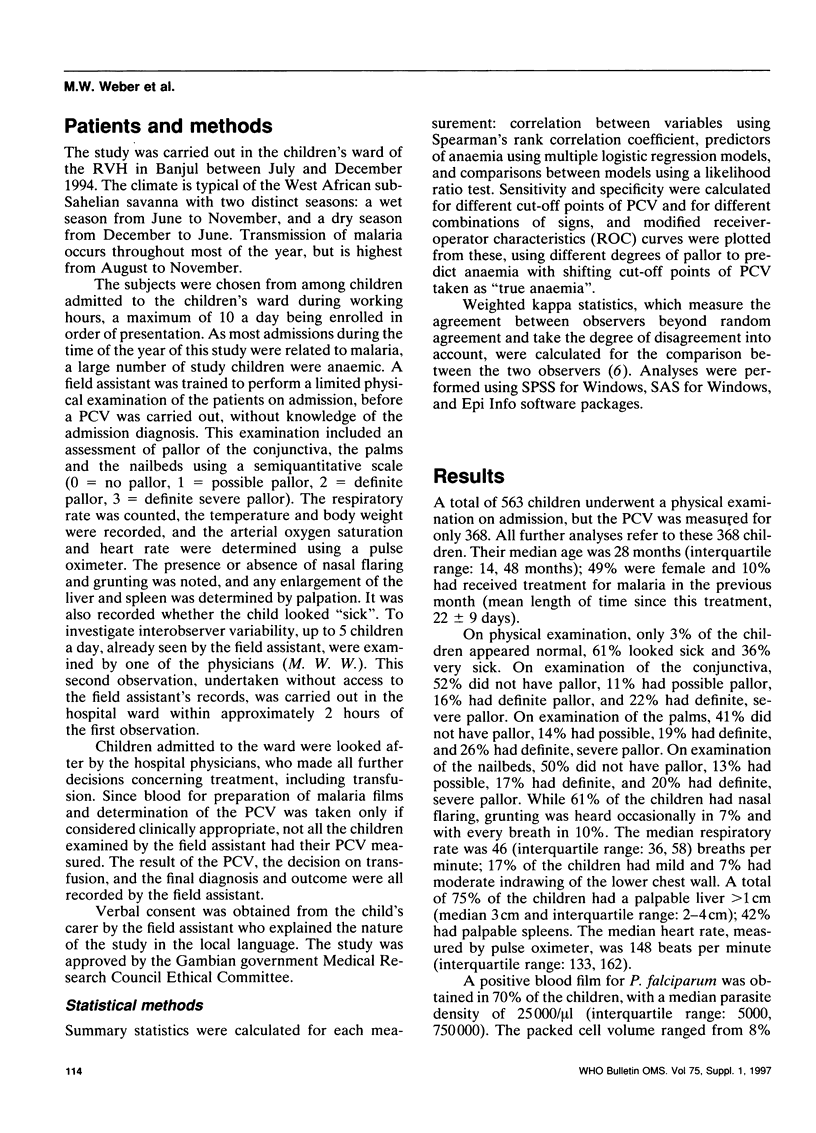
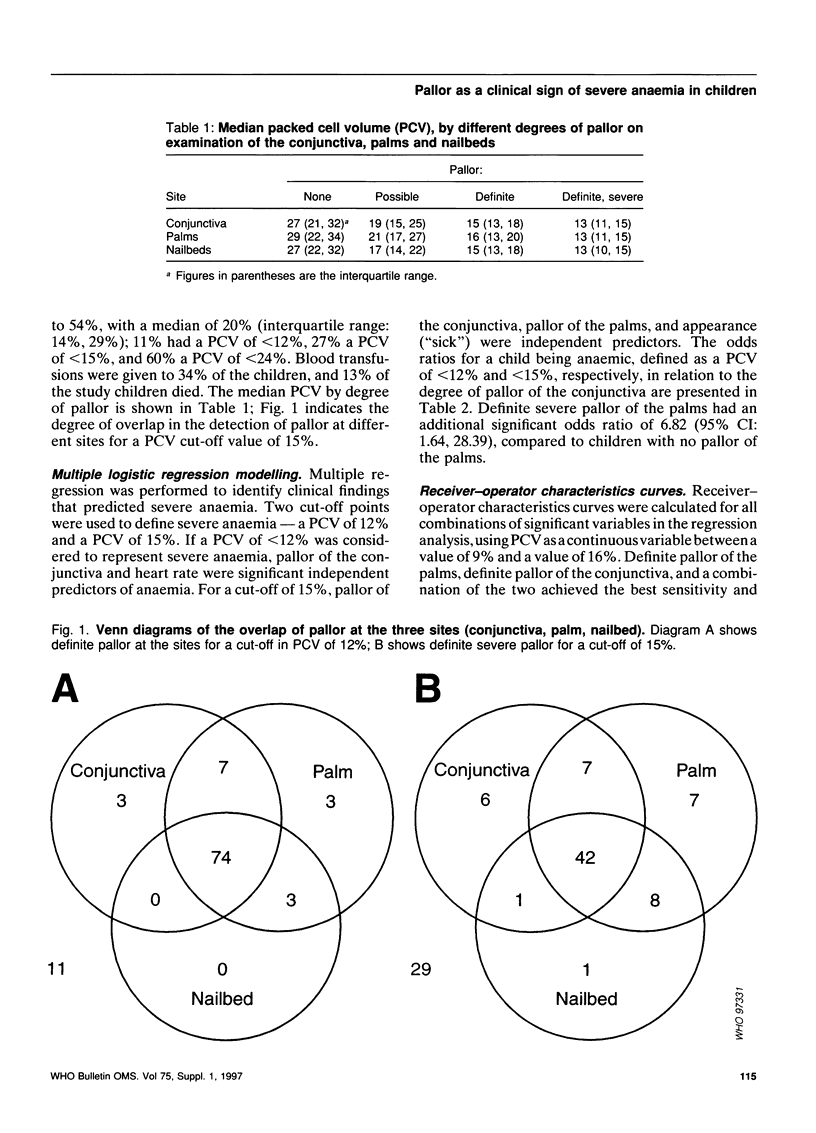
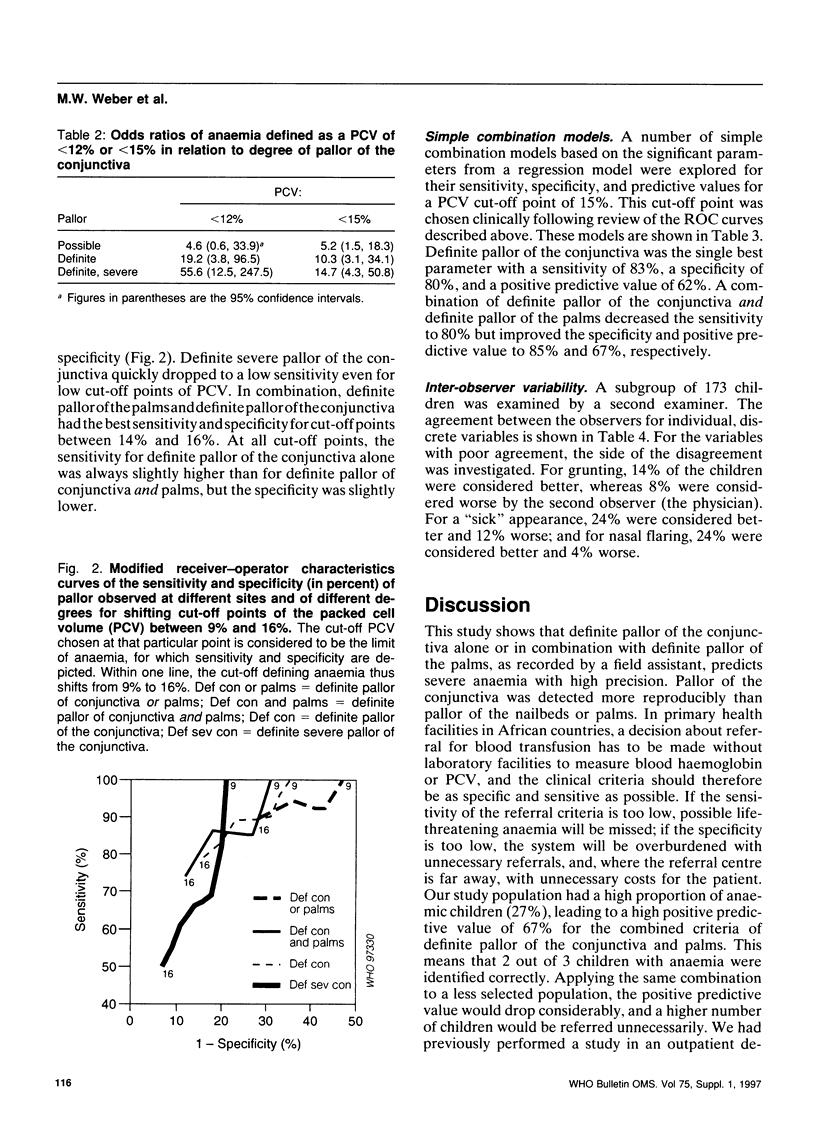
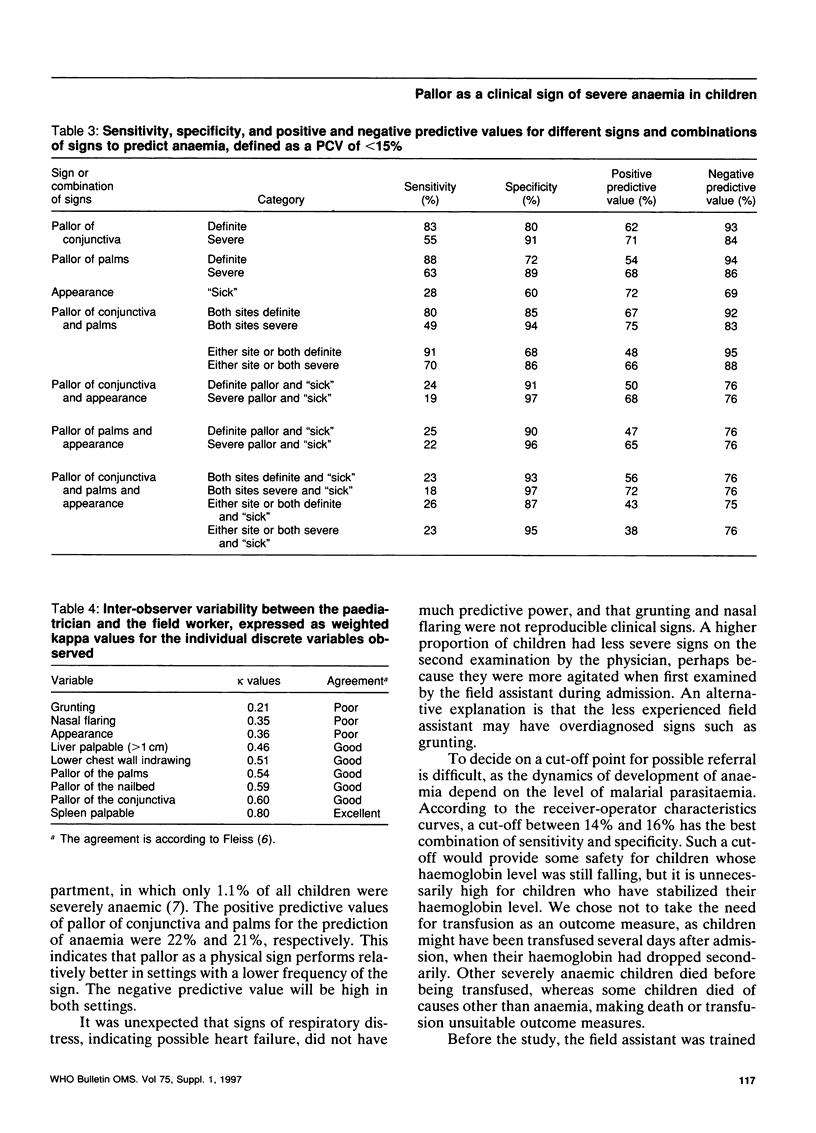
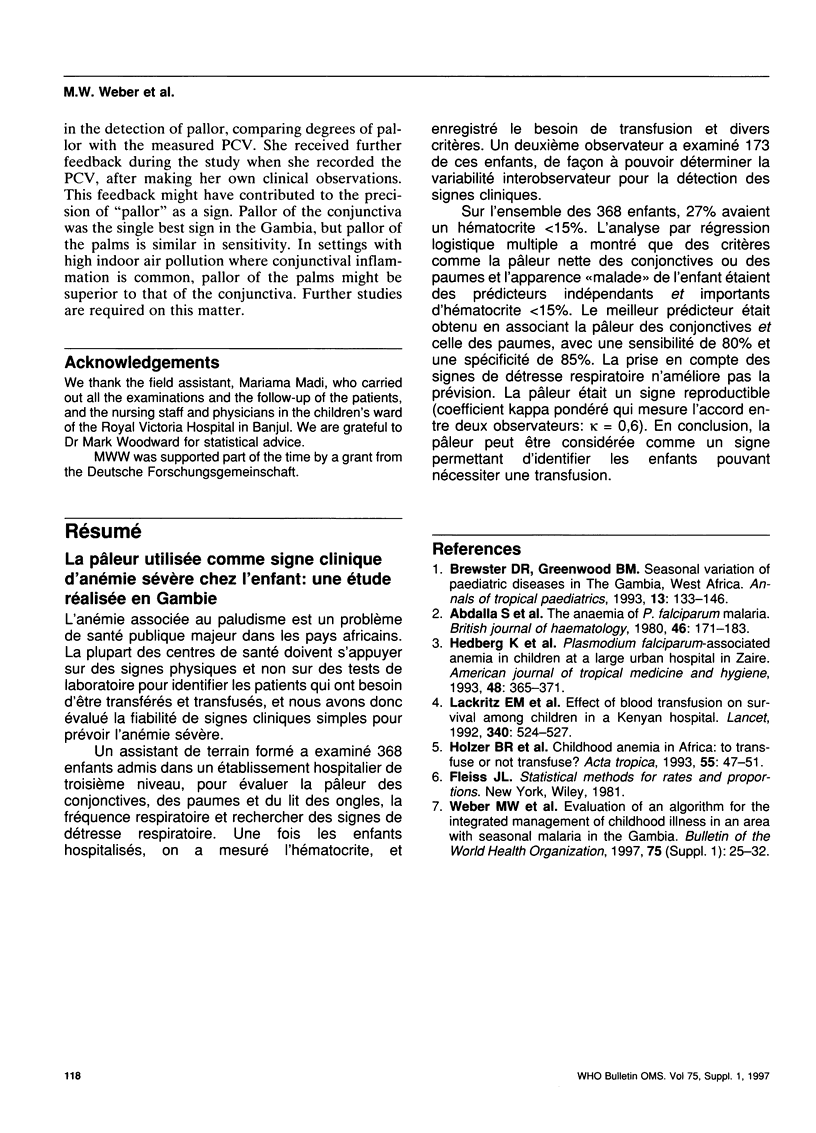
Selected References
These references are in PubMed. This may not be the complete list of references from this article.
- Abdalla S., Weatherall D. J., Wickramasinghe S. N., Hughes M. The anaemia of P. falciparum malaria. Br J Haematol. 1980 Oct;46(2):171–183. doi: 10.1111/j.1365-2141.1980.tb05956.x. [DOI] [PubMed] [Google Scholar]
- Brewster D. R., Greenwood B. M. Seasonal variation of paediatric diseases in The Gambia, west Africa. Ann Trop Paediatr. 1993;13(2):133–146. doi: 10.1080/02724936.1993.11747637. [DOI] [PubMed] [Google Scholar]
- Hedberg K., Shaffer N., Davachi F., Hightower A., Lyamba B., Paluku K. M., Nguyen-Dinh P., Breman J. G. Plasmodium falciparum-associated anemia in children at a large urban hospital in Zaire. Am J Trop Med Hyg. 1993 Mar;48(3):365–371. doi: 10.4269/ajtmh.1993.48.365. [DOI] [PubMed] [Google Scholar]
- Holzer B. R., Egger M., Teuscher T., Koch S., Mboya D. M., Smith G. D. Childhood anemia in Africa: to transfuse or not transfuse? Acta Trop. 1993 Oct;55(1-2):47–51. doi: 10.1016/0001-706x(93)90047-f. [DOI] [PubMed] [Google Scholar]
- Lackritz E. M., Campbell C. C., Ruebush T. K., 2nd, Hightower A. W., Wakube W., Steketee R. W., Were J. B. Effect of blood transfusion on survival among children in a Kenyan hospital. Lancet. 1992 Aug 29;340(8818):524–528. doi: 10.1016/0140-6736(92)91719-o. [DOI] [PubMed] [Google Scholar]
- Weber M. W., Mulholland E. K., Jaffar S., Troedsson H., Gove S., Greenwood B. M. Evaluation of an algorithm for the integrated management of childhood illness in an area with seasonal malaria in the Gambia. Bull World Health Organ. 1997;75 (Suppl 1):25–32. [PMC free article] [PubMed] [Google Scholar]


